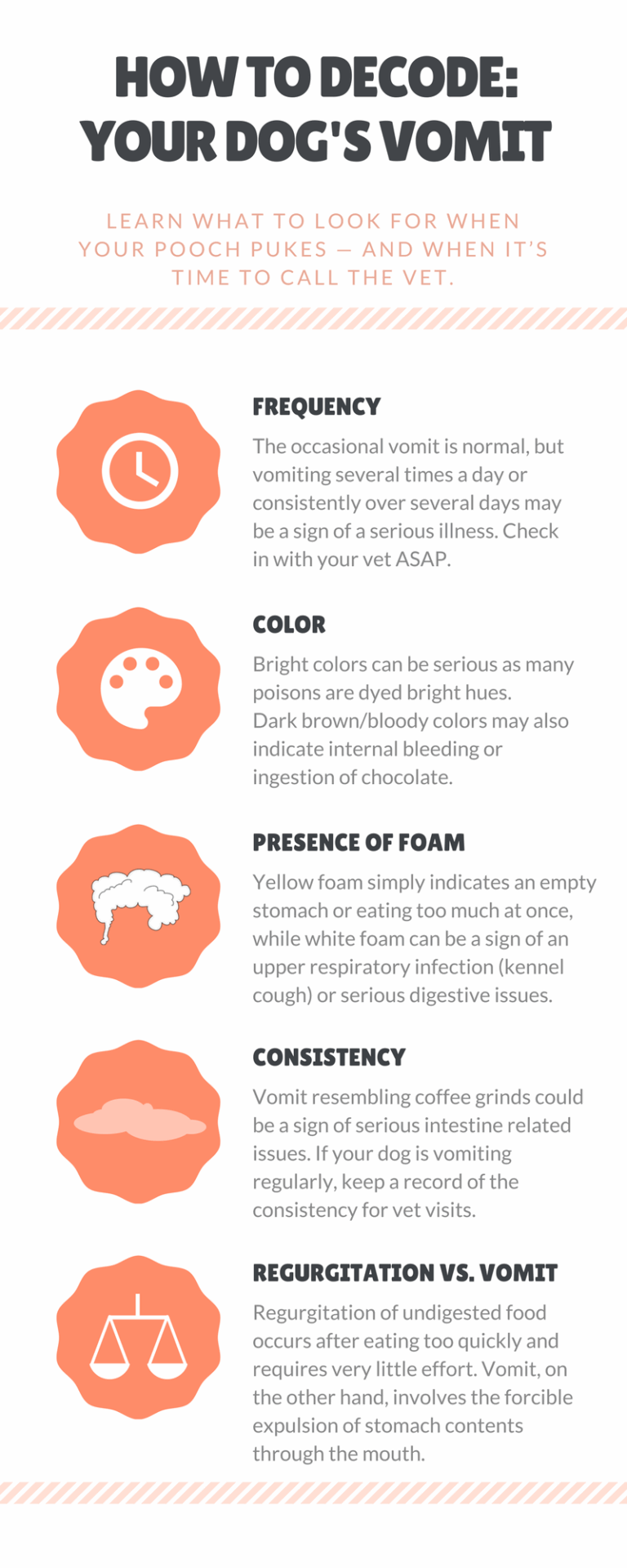Just about every dog vomits once in a while, and it’s not always a big deal. But if your dog vomits repeatedly, you should contact your veterinarian. Aside from frequency, the color and texture of your dog’s vomit can offer clues about what might be ailing them. Below, you’ll find answers to some common questions about foamy vomit in particular. For more detailed information about why dogs vomit—and what different types of vomit not listed here could mean—read our full guide on the subject.
Green or yellow foam
If your dog’s vomit looks green or yellow, whether or not it seems foamy, it may contain bile. Bile is produced by the liver and helps with digestion. Dogs can sometimes vomit bile if they go too long without eating, if they’ve been vomiting a lot, or if they’re vomiting with an empty stomach. This vomit could come out with a foamy appearance due to a buildup of stomach acid.
If your dog vomits yellow liquid or foam after not eating for a long time—especially in the morning after not eating overnight—they may have Bilious Vomiting Syndrome (BVS). BVS can often be treated by feeding your dog smaller, more frequent meals, but it’s important to talk with your vet to rule out other possible causes of vomiting that might be more serious.
If your dog’s vomit is green, they may have eaten grass, leaves, or other plant matter that they shouldn’t have ingested. Some plants are toxic to dogs—so if your dog ate a plant and you’re not sure if it’s okay, and especially if it’s making them vomit, call your veterinarian as soon as possible.
White foam
If a dog vomits white foam, what’s coming out is most likely a combination of saliva and other substances in the digestive system, which can take on a foamy consistency when they mix with air. This can happen for many reasons—some serious, some not. If your dog is otherwise healthy and vomits white foam once, you might just monitor them and see if they vomit again or show any other signs of illness. But if they’re a puppy or a senior, or have an underlying health condition, it’s a good idea to get them checked out by the vet right away. And if they vomit repeatedly, you should definitely seek medical attention.
Possible causes of a dog vomiting or regurgitating white foam include indigestion, acid reflux, dietary indiscretions, infections, heat stroke, kidney disease, parvo, pancreatitis, and bloat (many dogs with kennel cough may also bring up white foam, which can be mistaken for vomiting). Some of these may not be serious, but others are emergencies. Bloat, for example, is a condition in which minutes may make a difference. If you’re not sure that your dog is safe, it can’t hurt to give the vet a call and check.
Pink foam
If your dog’s vomit includes pink foam, there may be some blood mixing in with it. This is not always a sign of a very serious condition, but it can be. Dangerous causes of blood in vomit include intestinal blockages, poisons, ulcers, and tumors, so it’s important to investigate the situation.
No matter what, if you see signs of blood in your dog’s vomit—including not only pink foam, but also bright red blood or clots—visit the vet. If your dog’s vomit has more than a streak of blood, or is the consistency of coffee grounds, get medical attention immediately; it’s an emergency.










